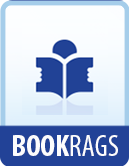Although Mary Lamb was the true author of the book, as of Mrs. Leicester’s School and of Poetry for Children, her share being much greater than her brother’s in all of these, she was not until many years later associated publicly with any of them. The Tales were attributed to Charles Lamb, presumably against his wish, as we see from a sentence in the letter to Wordsworth quoted above, and the other two books had no name attached to them at all. Why Mary Lamb preserved such strict anonymity we do not now know; but it was probably from a natural shrinking from any kind of publicity after the unhappy publicity which she had once gained by her misfortune.
* * * * *
Page 240. THE ADVENTURES OF ULYSSES.
Lamb must have been as busy in the years 1806-1808 as in any of his life; for he then not only had his India House work, but wrote his share of the Tales from Shakespear, Mrs. Leicester’s School and Poetry for Children, wrote all of The Adventures of Ulysses, and finally prepared his Dramatic Specimens. Moreover in 1806 he had the harassment of the alterations and impending production of “Mr. H.”
On February 26, 1808, he tells Manning that he has just finished The Adventures of Ulysses and the Specimens, describing The Adventures of Ulysses as “intended to be an introduction to the reading of Telemachus! it is done out of the Odyssey, not from the Greek. I would not mislead you: nor yet from Pope’s Odyssey, but from an older translation of one Chapman. The ‘Shakspeare Tales’ suggested the doing it.” Many years after Lamb wrote to Barton (August 10, 1827): “Did you ever read my ‘Adventures of Ulysses,’ founded on Chapman’s old translation of it? for children or men. Ch. is divine, and my abridgment has not quite emptied him of his divinity.”
Chapman’s Homer was the folio which Leigh Hunt tells us he once saw Lamb kiss.
Writing to Coleridge on October 23, 1802, Lamb says:—
“I have just finished Chapman’s Homer. Did you ever read it?—it has most the continuous power of interesting you all along, like a rapid original, of any; and in the uncommon excellence of the more finished parts goes beyond Fairfax or any of ’em. The metre is fourteen syllables, and capable of all sweetness and grandeur. Cowper’s ponderous blank verse detains you every step with some heavy Miltonism; Chapman gallops off with you his own free pace....
“I will tell you more
about Chapman and his peculiarities in my
next. I am much interested
in him.”
A brief correspondence which passed between Godwin and Lamb just before the publication of The Adventures of Ulysses may be given here.
WILLIAM GODWIN TO CHARLES LAMB
Skinner Street, March 10, 1808.




